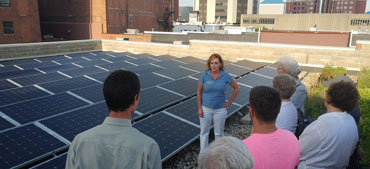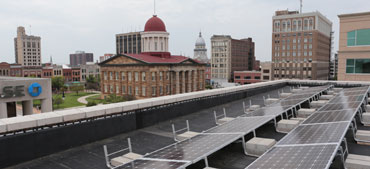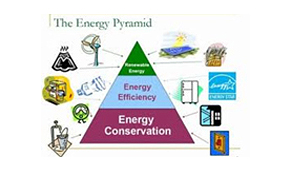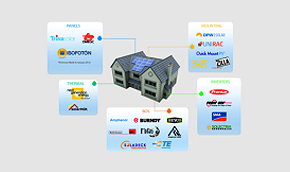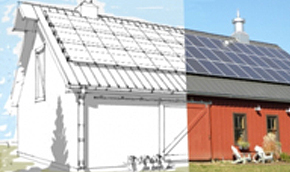By Michelle Knox, President, WindSolarUSA, Inc.
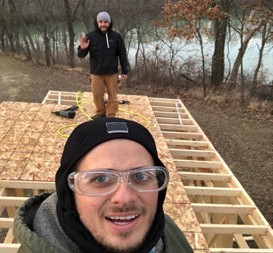
Tiny homes have become more popular as people look for portability/affordability in their homes allowing them greater flexibility in making life choices. Local electrical engineer, James Priester, decided to embark upon the journey of becoming an off-grid Tiny Home owner in 2017. His conceptual project became a reality when WindSolarUSA worked with James to help land a feature on a well-known network featuring his project. His story will air later this year (August or September), but Springfield Scene Magazine readers get an early glimpse here!
“I’ve always been interested in minimalism and reducing my carbon footprint as well as obtaining energy independence. When I started reading about tiny homes and seeing them, I loved the look and thought it would be perfect for me – the size and the challenge”, says Priester when asked about his motivations for planning this project. Where does one start once the decision has been made to join the revolution? The short answer from James is with research…and lots of it… mainly, in his case, via the internet. “You can find designs everywhere: google, Pinterest, tiny home websites, YouTube, etc. After finding a layout I liked I got an architect onboard to help me with optimization, especially in regards to storage. I have a lot of furniture that will be on lockable casters and can be easily converted from a sofa to a table for example. A lot of things are dual purpose. I may use some slat wall (that looks nice) so I can hang pots and pans and cutlery, etc. Basically, a tiny home has many of the same aspects of a regular sized home, just condensed. I wanted to be as off- the-grid as possible, so no utilization of city electric. I have also designed a rainwater collection and filtration system for most of my water use. For my lighting and power I will be utilizing solar, and for my cooking and water heating, I will be using propane. As of now, I do not have any air conditioning, just a lot of properly placed windows for good ventilation. For heat, I have a wood stove which should be sufficient for heating my home even in the bitter temps of winter”, shares Priester.
But will this home be able to travel? Well of course it will! “My tiny home will be fully portable. It is mounted on a 14,000-lb dual axel trailer. Since the home will encounter additional forces not experienced by a stationary home, additional structural precautions had to be taken into consideration. Many hurricane strength metal connectors, strapping, ties and hangers were used to accomplish the strength and rigidity required to counteract the variable wind forces and other forces generated by the towing motion of the home.”
Solar is an important part of this project in lending the portability aspect. When working with WindSolarUSA and Richard Henes of Werner Electric for product supply, James offered the following as far as his design aspirations, “Originally I wanted the panels on the roof for the ease of portability, but as I got more aggressive with my design I decided I wanted the option for a rooftop deck. Additionally, I wanted the ability for some expansion (additional panels) so I decided to ground mount instead.” In terms of the ground mount, we worked with James to design a system that will be ballasted, or held in place with weighted blocks, engineered for 115 mile per hour winds and 30 pounds per square foot of snow. When James is ready to go, he simply will remove the ballast blocks from his trays, remove the clamps holding the modules in place, unplug the connections and pack all up to go. This system is comprised of American-made products: SolarWorldmodules, Uniracracking and Outback Power inverters. Solar installation will be done by WSUSA’s usual electrical installation team leader, Brian Rachford, of Senergy Electric.
Richard Henes provided expertise in the design of the off-grid portion/ integration of batteries and generator recommendations. The batteries that will be used are AGM (absorbed glass matt) and were chosen because they are sealed, spill-proof and require no ventilation, while still being economical. Outback Power, out of Washington State, inverters are being utilized because, “The features and functionality of the Outback Power system are superior to any other product available and the technical support offered by Outback is second to none. If the system is connected to the internet, the owner can access the system from anywhere he has an internet connection with a laptop or tablet and have full programming control. This also means the system installer and the manufacturer can also be granted this access to assist the system owner with system performance and optimization”, says Henes. “This system should provide one to two days of power under normal conditions without solar gain. The generator will back up the solar during rainy, cloudy weather.”
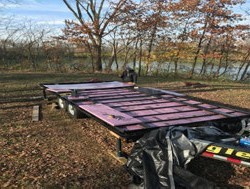
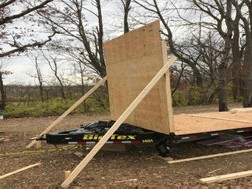
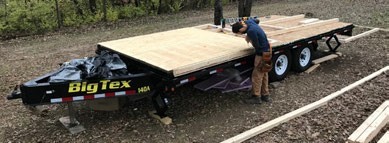
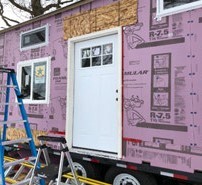
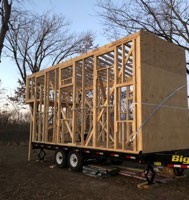
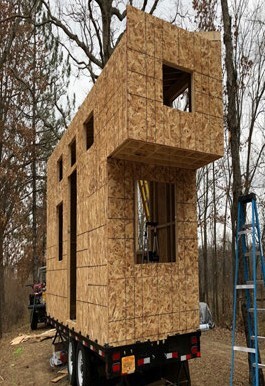
Home when complete? “With the ability to be off grid I could park it in the middle of the Rockies or perhaps somewhere in Yosemite Park. I will be able to live just about anywhere. And if I can work remotely or make my work mobile this will be all the better. The experience has been very challenging and rewarding. I cannot wait for it to be finished and have that feeling of building my own home with my own sweat and tears!”


